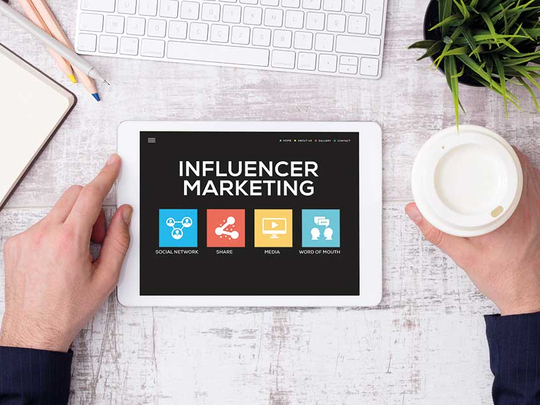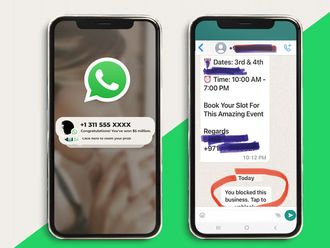
Dubai: Ready to sign up an influencer to headline your next digital/social campaign? Then join the queue.
In the US, 50 per cent of marketers are ready to raise their 2018 budgets targeted at roping in influencers. Some of the same sentiments are starting to show up in the UAE as brands and their owners work out ways to keep the messages going out, but without the significant costs associated with running more traditional ad campaigns on print or TV.
But keep in mind that even influencer fees are on the rise. For the record, influencers are anyone with a large enough follower base who go by whatever they have to say about trends, the fashion sense of the moment, and anything beside that. Brands have come to like what influencers can offer, by helping them reach that committed audience. And in the UAE, they can charge in the tens of thousands for short-span visuals/videos of them endorsing and which run for a specific period.
But does having all those followers mean influencers can ask and get what they want?
“The big challenge brands have now is to understand if the influencer is worth the request or not,” said Marco Marranini, chief operating officer for Europe at Los Angeles-based Open Influence. His job profile is to gauge whether these influencers do actually carry all the clout the size of their followers suggest they have. This is where an ‘influencer marketer’ comes in. “They [brand owners] can work closely with influencer marketing experts that can analyse the audience engagement, the industry the influencer belongs to, the story behind the person and so forth,” said Marranini.
“Brands shouldn’t set their strategies based on influencers’ fee, but in fact it should be vice versa. It’s essential and advisable that brands set their objectives and goals and then identify and work with the most suitable influencer(s).”
If influencer marketers do their part, brands can then — within reason — be hopeful of delivering the kind of impact they seek. Despite all the negativity swirling around fake news and fake ads, the social media advertising build-up is not about to wane. Estimates suggest that it will keep on hitting growth rates of 20 per cent and reach $50.2 billion (Dh184.38 billion) globally by 2019. According to Marranini, brands have to learn to look at more than the size of followers. “Looking at the number of followers or clicks is the first level of getting into the influencer marketing world — but it barely scratches the surface,” he said.
“Influencers can give you access to an audience you’d never reach on your own. Studies show that 71 per cent per cent of consumers are more likely to make a purchase based on a social media reference.
“To channel this value into an influencer campaign, it’s extremely important to understand these numbers in relation to the brand and its objectives. Hence, choosing the right influencer is like guaranteeing 80 per cent success of a campaign,” he said.
Marranini urges caution when it comes to influencers whose tall claims may not add up to anything substantial in return.
“It is true that quite a few influencers ‘buy’ followers and even engagement overnight,” said Marranini.
“This is something we show our clients every day because it’s important to educate the market and cut fake influencers. Getting to the depths of this and understanding it fully is not that easy. However, we can see the growth of a profile — or even the growth of the engagement per single post — identify discrepancy with the growth trend and the averages of each influencer and industry.
“Influencer marketing is a balance of hitting brand objectives, while keeping consumers’ needs and concerns top of mind. The key is to ensure content is aligned with brand goals and connected to consumer interests.
“If a brand’s approach toward influencers is similar to that toward traditional media, it’s a sure recipe for failure.”
Defining the actual impact of influencers
Brand marketers and ad agencies need them, but they are still far from nailing the best way to use influencers.
They are “grappling with the challenge of clearly defining the boundaries of influencer marketing as a new communication form,” said Marco Marranini of Open Influence.
“Gaining access to data and basing decisions purely on that is not an easy task. We drive our clients into understanding what’s there beyond influencer pictures — analysis of the demographics, location, mention, tags and even what’s inside the picture even though it’s not written with hashtags.”












